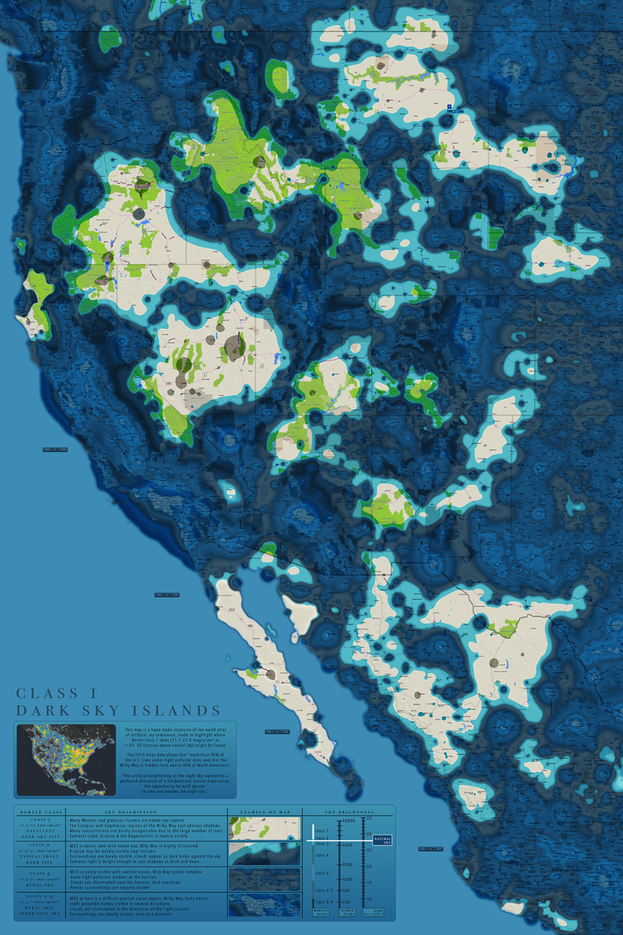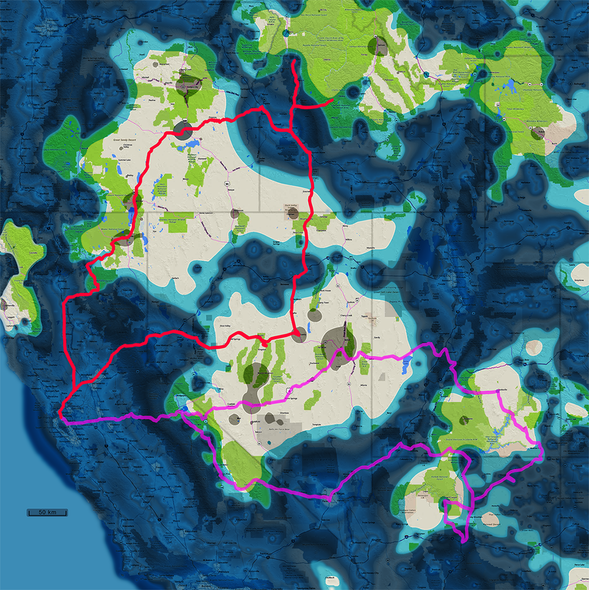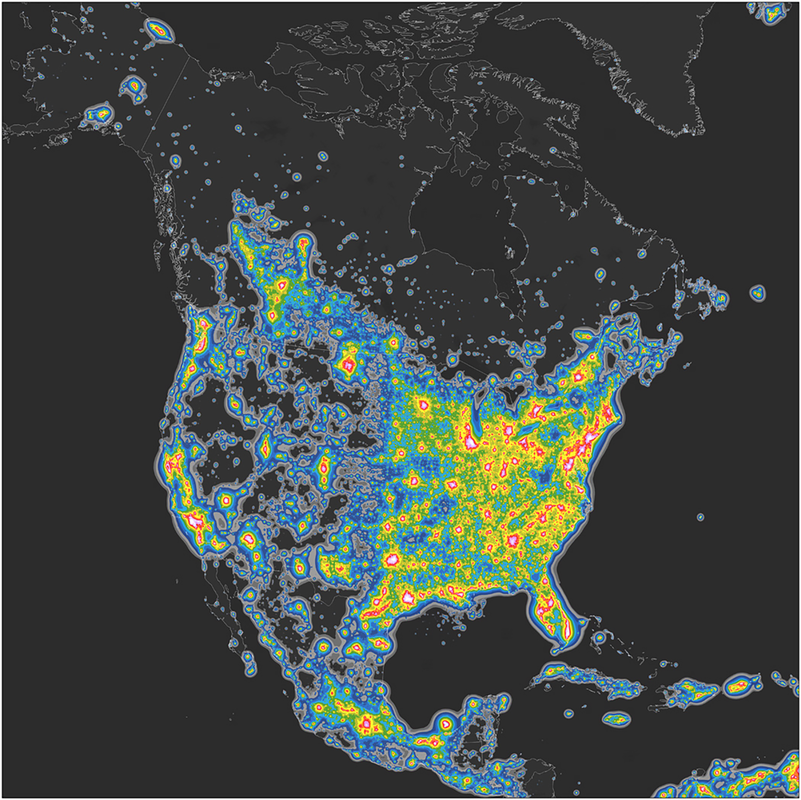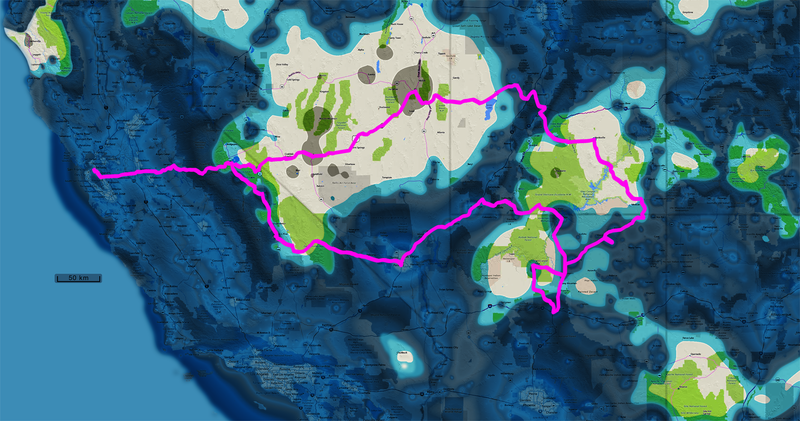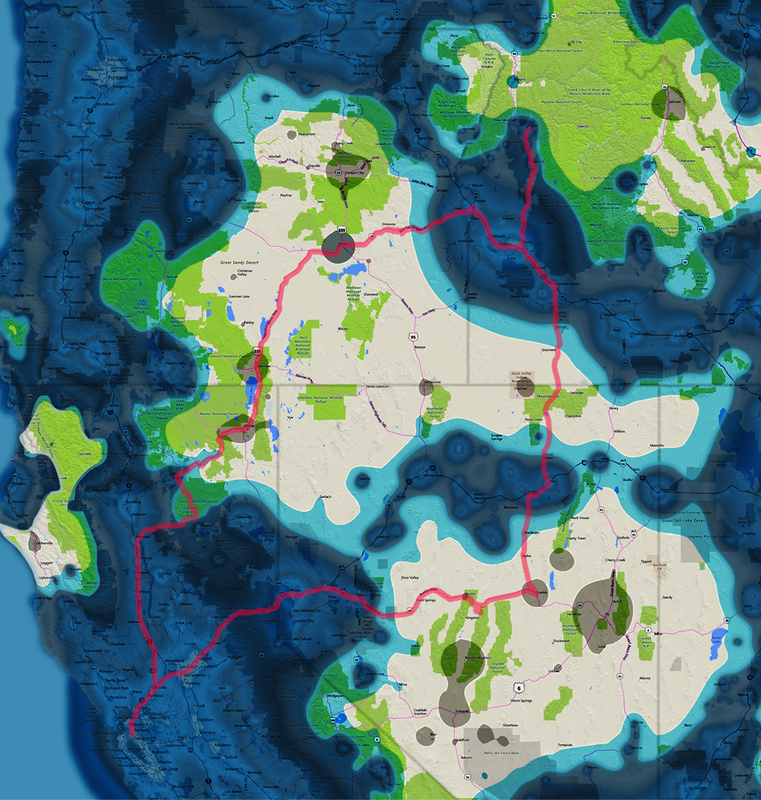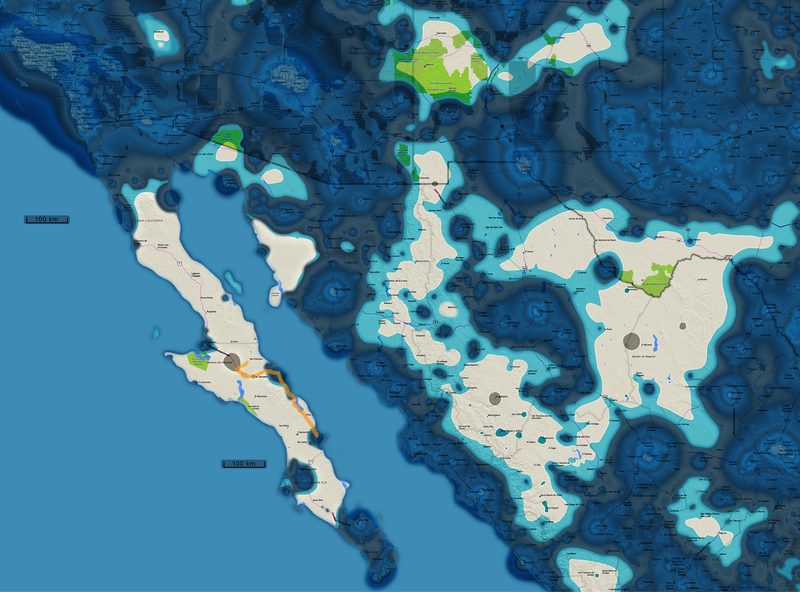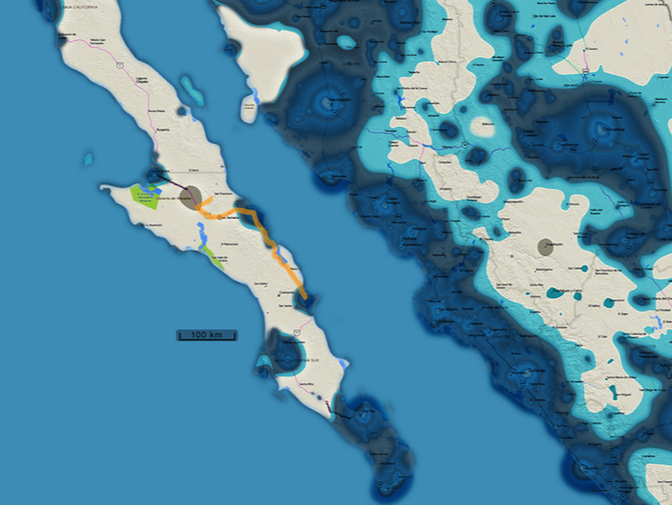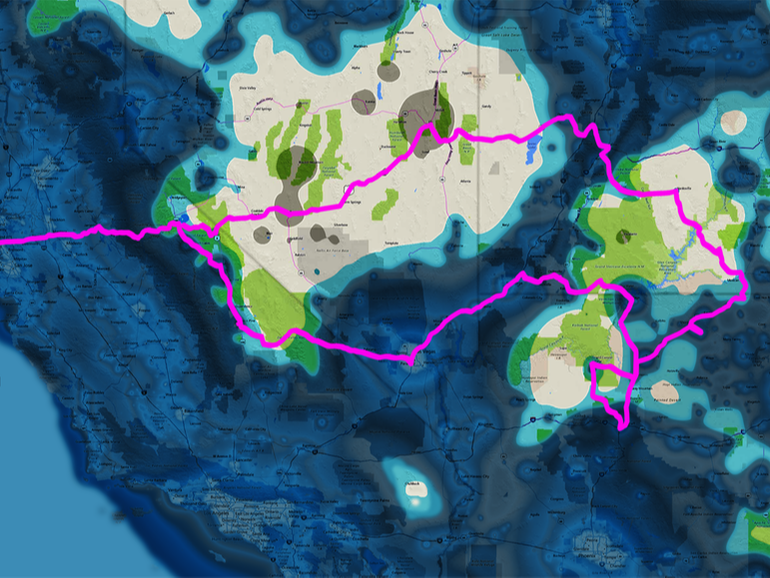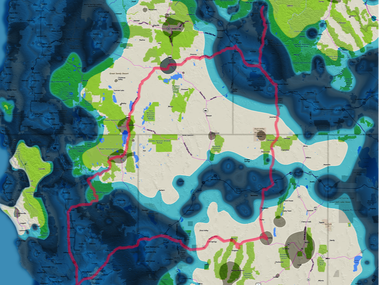DArk Sky Islands MAP
Class 1 Dark Sky Islands MapPlanning for where and when to photograph the night sky is a huge part of amateur astronomy and nighscaping. We have been using the light pollution maps along with clear skies apps to organize nights out for years. By reversing the map to highlight where the best places are to escape light pollution, it's easier to imagine where and what the perfect sky would look like. Using Atlas map in Photoshop, the image is reversed, with the color grading highlighting the areas that shape the boundary of Bortle Class 2 or lower.
This map shows Dark Sky Islands that designate areas in the lower 48 United States that one might find Class 1 skies under perfect weather conditions. It's not perfect, but it does shed light on the light pollution issue. |
"This atlas shows that more than 80% of the World and more than 99% of the U.S.A. and Europe populations live under light polluted skies. The Milky Way is hidden for more than one third of humanity, including 60% of Europeans and nearly 80% of North Americans. Moreover, 23% of World's lands between 75°N and 60°S, 88% of Europe and almost half of U.S.A. experience light polluted nights."- New World Atlas of Artificial Night Sky Brightness
More about map
Dark Sky IslandsI'm using this map to chronicle my trips to dark skies. Experiencing these remote spaces and exploring them not only at night but by day always ends up being a part of the adventure. Center for land Use interpretation is an example of the type of resource that are out there to plan your next dark sky tour.
|
About the MApThis is a map of artificial night sky radiance that was produced by the Light Pollution Science and Technology Institute (ISTIL), and described in the paper "The New World Atlas of Artificial Night Sky Brightness" (Falchi et al. 2016). I took the color grading of the Atlas map(above) and highlighted the areas that are dark showcasing areas where truly dark skies might exist.
|
Elusive Class 1 sky
How do you know you're in the darkest sky possible?
explanations by wikipedia
Zodiacal light (also called false dawn when seen before sunrise) is a faint, diffuse, and roughly triangular white glow that is visible in the night sky and appears to extend from the Sun's direction and along the zodiac, straddling the ecliptic. Sunlight scattered by interplanetary dust causes this phenomenon. Zodiacal light is best seen during twilight after sunset in spring and before sunrise in autumn, when the zodiac is at a steep angle to the horizon. However, the glow is so faint that moonlight and/or light pollution outshine it, rendering it invisible.
Airglow (also called nightglow) is a faint emission of light by a planetary atmosphere. In the case of Earth's atmosphere, this optical phenomenon causes the night sky to never be completely dark, even after the effects of starlight and diffused sunlight from the far side are removed.
Gegenschein (German for "countershine") is a faintly bright spot in the night sky, around the antisolar point. The backscatter of sunlight by interplanetary dust causes this optical phenomenon. Like the zodiacal light, the gegenschein is sunlight scattered by interplanetary dust. Most of this dust is orbiting the Sun in about the ecliptic plane, with a possible concentration of particles at the L2 Earth–Sun Lagrangian point.
It is distinguished from zodiacal light by its high angle of reflection of the incident sunlight on the dust particles. It forms a slightly more luminous, oval glow directly opposite the Sun within the band of luminous zodiacal light. The intensity of the gegenschein is relatively enhanced, because each dust particle is seen in full phase.
Airglow (also called nightglow) is a faint emission of light by a planetary atmosphere. In the case of Earth's atmosphere, this optical phenomenon causes the night sky to never be completely dark, even after the effects of starlight and diffused sunlight from the far side are removed.
Gegenschein (German for "countershine") is a faintly bright spot in the night sky, around the antisolar point. The backscatter of sunlight by interplanetary dust causes this optical phenomenon. Like the zodiacal light, the gegenschein is sunlight scattered by interplanetary dust. Most of this dust is orbiting the Sun in about the ecliptic plane, with a possible concentration of particles at the L2 Earth–Sun Lagrangian point.
It is distinguished from zodiacal light by its high angle of reflection of the incident sunlight on the dust particles. It forms a slightly more luminous, oval glow directly opposite the Sun within the band of luminous zodiacal light. The intensity of the gegenschein is relatively enhanced, because each dust particle is seen in full phase.
2019 Santa Teresa Canyon, Baja
dark sky island tour2019 Baja
Led by local ranch hands three of us road burrows down into the Santa Terras Canyon in the Sierra de San Francisco in Baja California to experience the UNESCO world heritage site home to the the Great Murals made thousands of years ago and photograph class 1 skies. Learn More >
|
DARK SKY ISLAND TOUR2018 National Parks
This Family road trip was designed to explore some of the US's darkest Southwestern skies and visit 9 national Parks in 12 days. Learn More>
|
DARK SKY ISLAND TOUR2017 Eclipse in Idaho
This Tour maps my family's road trip from the Bay Area in California to Idaho for the full eclipse of 2017. It took us through many dark sky locations in Northern California Oregon Idaho and Nevada. Learn More>
|
